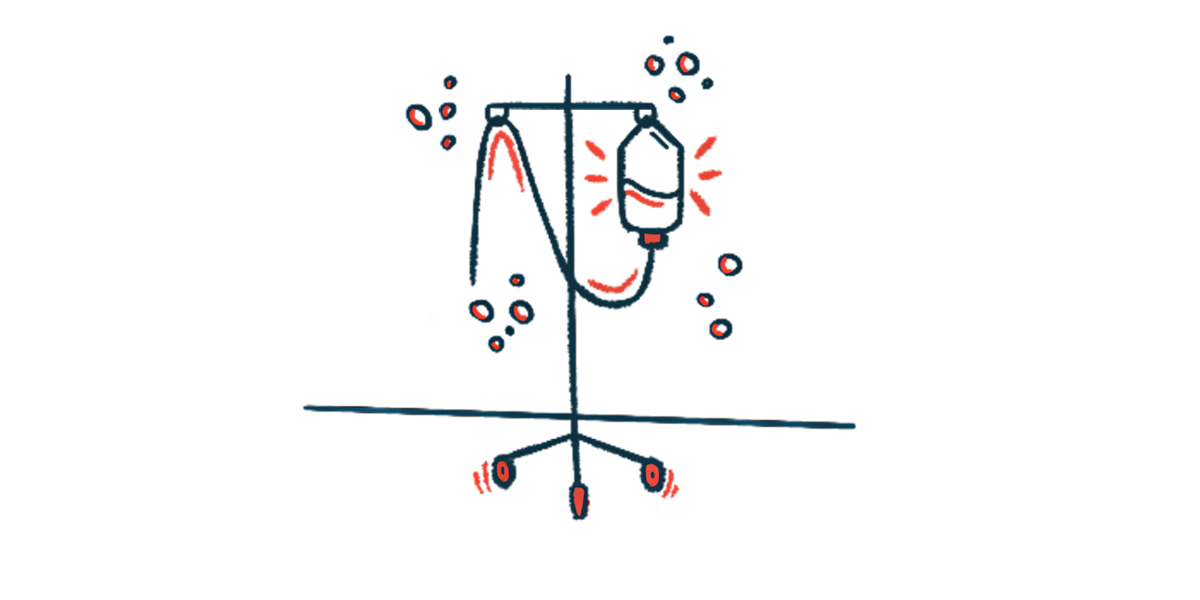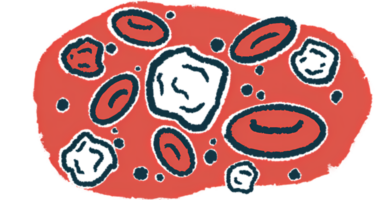Study confirms approved Ocrevus dose as optimal for relapsing MS
No added benefit seen with higher dose in slowing disability progression

No added benefit was found in increasing the dose of Genentech’s Ocrevus (ocrelizumab) — to two to three times the currently approved 600 mg dose — in slowing disability progression in adults with relapsing multiple sclerosis (MS), according to new data from a Phase 3 clinical study.
The study, called MUSETTE (NCT04544436), did not meet its main goal of further prolonging the time to disability progression in patients treated with Ocrevus at a higher dose of 1,200 or 1,800 mg, the data showed. Like the approved dose, the higher doses were administered directly into patients’ veins by intravenous (IV) infusion.
“These findings reaffirm that the current Ocrevus IV 600 mg is optimally dosed to significantly slow disability progression,” Levi Garraway, MD, PhD, Genentech’s chief medical officer and head of global product development, said in a company press release.
Similarly to past studies of Ocrevus, the rates of disability progression among MS patients were low. In addition, predefined analyses showed a historically low rate of relapses — when symptoms reappear following a period of remission — with the 600 mg dose, confirming it as optimal for slowing disability progression, per the company.
“In several predefined analyses on disease activity, Ocrevus showed clinically meaningful results on relapses with a relapse occurring approximately once every 16 years,” Garraway said, noting this as “a first” for a therapy of this type in treating relapsing MS.
MS study testing 2-3 times higher Ocrevus dose failed to meet goal
In MS, the immune system mistakenly launches an inflammatory attack that damages nerve cells in the brain and spinal cord. Immune cells, particularly B-cells, are believed to be the primary drivers of the damage that leads to accumulating disability.
Ocrevus — along with its newer subcutaneous, or under-the-skin, injection formulation, called Ocrevus Zunovo — are the only approved therapies for both relapsing MS and primary progressive MS (PPMS). In relapsing MS, such episodes are followed by periods with milder or no symptoms. In PPMS, meanwhile, symptoms gradually worsen over time.
Both formulations are administered every six months.
“Ocrevus is the first and only B-cell therapy approved for [relapsing MS] and PPMS and after more than [10] years of treatment, the majority of people with [relapsing MS] remain free from disease progression,” Garraway said.
Researchers questioned, however, whether a dose higher than the one currently approved might further slow MS worsening in adults.
Ocrevus is the first and only B-cell therapy approved for [relapsing MS] and PPMS and after more than [10] years of treatment, the majority of people with [relapsing MS] remain free from disease progression.
The MUSETTE study, still underway at multiple sites globally, was designed to test that idea. The trial enrolled 864 people, ages 18 to 55, who were diagnosed with relapsing MS and had experienced either at least two relapses within the two years prior to study screening or one relapse in the year before screening.
Participants were randomly assigned to receive Ocrevus at a higher-than-approved dose or the approved dose for at least 120 weeks, or about 2.3 years. The higher dose was 1,200 mg for those weighing less than 75 kg (165 pounds), and 1,800 mg for those weighing 75 kg or more.
After this initial part, patients could then enter an open-label extension to receive Ocrevus for an additional period of 96 weeks, or about 1.8 years.
The study’s main goal was to see if a higher dose of Ocrevus would work better than the therapy’s currently approved dose at prolonging the time to confirmed disability progression. This was measured by watching for sustained changes in Expanded Disability Status Scale scores, walking speed, or hand control, over the course of 12 weeks, or about three months.
While the study did not meet its main goal of further slowing disability progression, the higher dose of Ocrevus was well tolerated with a safety profile that matched that of the approved dose. No new side effects were observed during the study.
Overall, per the release, “the rates of disability progression were low and consistent with rates observed in the previous pivotal studies of Ocrevus IV 600 mg.”
Full data from MUSETTE will be presented at a future medical meeting, according to Genentech.







